In order to break ground in the first quarter of 2018, as Build Inc. was projecting, the Draft Environmental Impact Report (DEIR) for the massive India Basin project (which now includes over 1,200 units of housing, 1,800 parking spaces, 275,000 square feet of commercial space and nearly ten acres of open space, plazas and pedestrian alleys) was expected to be published this past spring, allowing time for public hearings to be held and project approvals to be secured by the end of 2017.
But with spring having sprung and the end of summer a month away, the DEIR for the proposed India Basin project has yet to be released.
Keep in mind that the project team has been working on a more “commercial variant” as well, an alternative plan which would increase the proposed commercial space to over a million square feet while reducing the development’s dwelling unit count to 500. We’ll keep you posted and plugged-in.
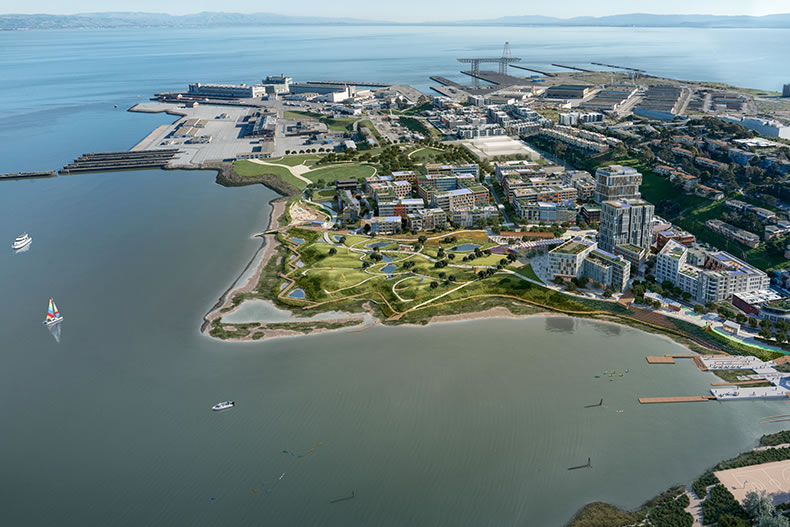
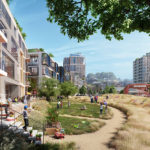
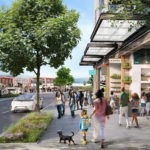
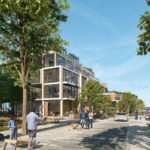
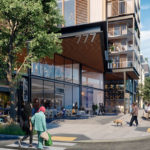
So the “commercial variant” would be more like a mall with some housing, similar to Candlestick?
literally the only profit-driven project in the entire bay area, perhaps the state, that rehabilitates the coast while protecting against storm surge and adding much-needed mixed-use development. terribly sad that the environmental planners of SF can’t get this DEIR out the door faster. like actually, it causes me depression.
what’s the hold up?!?!?! parking!?!?!
The EIR is prepared by the project team proposing the development. Not SF planning.
oops. thanks.
This story makes it sound as if the reason for the delay is a shift in direction – a huge drop in housing units with a concomitant large increase in commercial space. A blowback from the stagnating SF condo market?
What is meant by commercial space? Does it include offices? If not, can the changing retail industry support a million more feet of space here? Either way, any effort to reduce the housing component should be rejected by Planning.
The demands of density require the “bundled housing”, but still it’s too bad 50 or so townhomes could not have been included in the project. I was at Riverscape over the weekend and its waterfront townhome units are spectacular – though, granted, pricey.
San Francisco cannot look at Brisbane with a straight face and ask them as a municipality to build housing if we aren’t serious about doing the same on our opportunity sites.
I know this isn’t an apples to apples comparison as we have other large scale housing developments in the pipeline (Park Merced, TI, Balboa Reservoir, etc…) but losing a potential 700 housing units simply due to what pencils out for Build Inc. shouldn’t be acceptable by the Planning Dept. and the talking heads at City Hall.
Agreed. We’re in a housing shortage and we shouldn’t accept this project unless it brings one new home for every new job it’s adding, at an absolute minimum.
Agreed. SF has the worst jobs / housing balance in region. The recent land use plans will all further deteriorate the situation.
there is no way SF wouldn’t have the biggest jobs/housing imbalance in the region as it has the biggest financial district as well as many government institutions. BARTs existence was to support downtown SF as a focal point.
This is such a great site, it would be a shame to see this continue to languish. But I can easily see where Build would be watching Lennar closely and see that the Shipyard project isn’t exactly selling out like gangbusters…more like a slow steady slog, and also that Lennar has the potential to create many many more units with much better freeway access in the Candlestick section of their megaproject site, and have a little bit of despair about how they can possibly shoehorn an economically feasible project in. BUT…I think going for commercial would be the wrong way to go…this isn’t going to be an office or R&D destination any more than (I think) Hunters Point Shipyard will be, despite official plans. It will ALWAYS have access issues.
Do you have data on the Shipyard project selling slowly? My impression was that the apartments were going quite quickly. Having said that, I agree that there is a bit of a first move disadvantage. The first hundred buyers/renters must feel quite isolated out there. However, once a critical mass of people move in the area, there will be more amenities, public transport and other infrastructure built out. Lennar is already locked into that position, so Build has some cover in that regard.
Also, keep in mind that the India Basin will have better views of downtown (at least the towers) and better access to the Dogpatch than Candlestick. This should make India Basin much more attractive for residential developments.
I don’t have figures on the Shipyard off hand, but it seems to me that things have slowed down this past year. They’ve been trying to wrap up sales on their second phase, and seemed to be somewhat delayed in finally opening up sales of their third phase even though construction was plowing ahead. Now they seem to have decreased the pace of development, focusing mostly on finishing up what they’ve started.
I agree in general with your opinion on India Basin. It not only has good views, but it also has great access to the Bay, and there are no impediments to creating the very large park at the doorstep of their units, and it has ready access to the existing shoreline parks as well. The Shipyard housing, by contrast, is walled off from the rest of the shipyard and it appears that could be true for years if not decades at the current pace of development. And Innes Avenue has at least some potential for developing into a minor commercial corridor organically as more people move in, and For those reasons I’d choose India Basin over HPS. However, both are between 10 and 15 minutes from the highway, and the transit currently is mediocre, so it’s going to be a long time before either feel very central. If the market is largely for tech workers going south, Candlestick is preferable to either, in terms of transportation options, with access to both the freeway and Caltrain.
I doubt that the hold up is due to falling rental levels. Here is why:
1) Planning for this project must have started 2-3 years ago. Current rents have fallen from the peak in 2016, but they are not below 2015/2014 prices. I doubt that the initial proposal for 1200 units was planned to be viable only under circumstances that rents continue to rise from the levels prevalent at that time.
2) Large scale projects like this are completed in multiple phases over several years (if not decades, as for the Hunters Point Development). This allows to smooth through the real estate cycle. Most likely, the first units of this project won’t see the light of day before the early-to-mid 2020ies. Even if you assume the cycle is turning now, nobody can predict where it will be in 5 years.
3) While commercial leases per square foot are still at a record high in SF, there are some signs that the current cycle is turning. Absorption rates have been negative for two quarters. In light of these trends, why would a developer switch from residential to commercial development, if the state of the cycle is truly the main concern?
Overall, I believe the only reason for the hold up are the environmental questions. This is a tricky location and the developer has to answer questions about industrial pollution, sea level rises, protection of local ecosystems (nearby bird breeding grounds), earthquake preparedness etc.
1) Try 2002 (at least if you’re referring to the earliest iteration)
The original proposal reads as if the 250K feet of commercial space is to support the community. I assumed that it was retail-centric and not office focused.
There are about 10 million feet of office space in the pipeline. More than will likely be needed for a long time. Adding onto that with more office space here – if that is what the 1 million square feet will be – makes no sense. With negative absorption, falling labor force and the shift of large work groups out of SF to Oakland and other places.
As it is Lennar HP/CP doesn’t seem like it will be able to attract Google and especially as Google is focusing all its BA growth in the massive 8 million feet of office space its building in SJ. If anything HP/CP looks like a good part of its focus might be educational rather than office use. This does not bode well for another million feet of office space up the road a bit – if indeed that is what this new proposal becomes.
I don’t often agree with Dave, but I really don’t see Hunters Point becoming a major employment hub. I’m sure Lennar is tied up in knots about what to do with the bulk of HPShipyard (despite the starchitect), where they are very publicly courting employment generators but have been very quiet on announcements. I personally expect them to move towards Candlestick and leave HPS on ice for a little while. Will be interesting to see.
The environmental aspects even from the small amount of it my employer sees when seeking out subcontracting work at Hunter’s Point is mind numbing. Throw in the fact you got this Navy transfer to city going on & stipulations being put forth makes it even more complicated.
Does anyone know how much flexibility the HPCS developers have in delaying the project? The city should certainly put up some pressure if construction stalls, given the persistently high costs of housing.
Generally this project is, IIRC, set to be built out over several decades. That would allow them to delay things if sales and prices stall.
Lennar sought an exemption from Prop M and got it via Prop O. Presumably they would build office first over residential – why else seek the exemption if one isn’t going to frontload the office component. That said, the housing crisis remains and the office market is showing increasing weakness. The Prop O victory may prove hollow. The City can’t force them to build housing at any particular time, but when they build more the City could force housing to be built before offices. Despite Prop O. Which begs the larger question, HP/CP is set to have up to 5 million square feet of office space but is that really viable or needed given trends? Why not significantly cut the office component and instead build housing?
even 1200 units of housing seems pretty miniscule for this acreage
Remove the office component here and that’d allow significantly more housing. Reduce to office component of Lennar’s HP/CP from 5 million to 1.5 or so and imagine the additional housing units – 6K or more?
The problem is SF’s CBD is about built out. Even SOMA is running out of parcels for large office development. The City PTB are trying to force office development on areas of the city which can’t support it. The reality is SF has no room for significant additional office development, but craves that out of monetary and city ego issues.
Hence we get the absurdity of trying to force 5 million feet of offices at CP. Even the companies to which this office space is supposedly being targeted aren’t buying it. Hence the problems Lennar is having rounding up tenants. Imagine a Central SOMA plan with minimal additional office workers but 20K new units of housing – one can only hope.
We’ll never support the commercial variant in the neighborhood…
UPDATE: Projected Impact and Timing for Massive India Basin Development